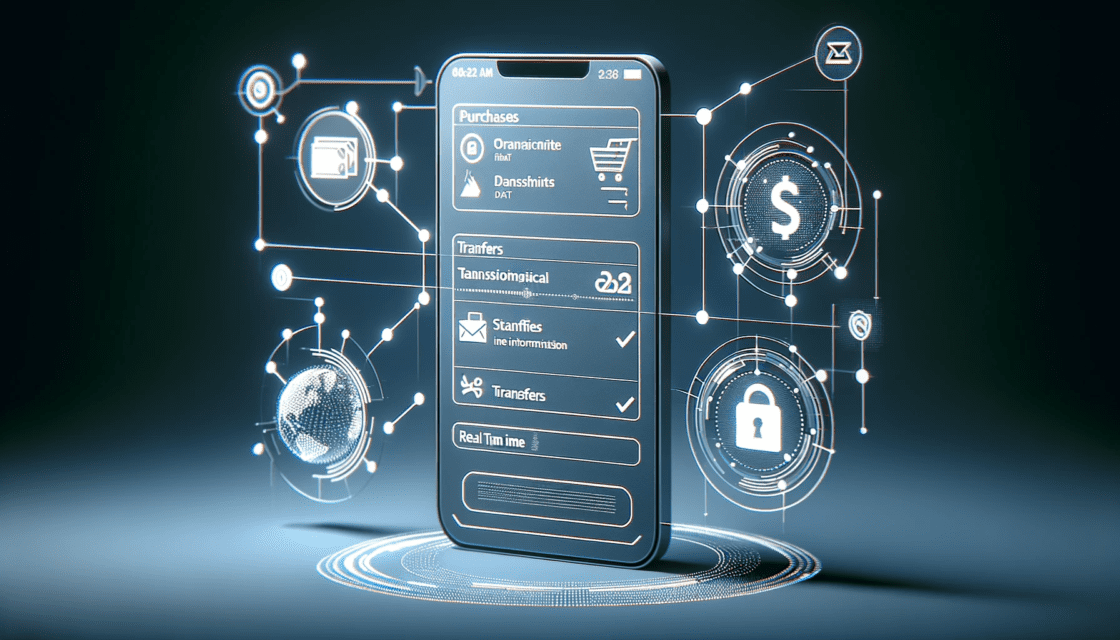
The Growing Importance of Transactional Data in Banking
Transactional data has emerged as a cornerstone for innovation and customer satisfaction in the rapidly evolving financial sector. This data, generated from everyday financial activities, holds the key to understanding customer behavior, preferences, and needs.
Banks that harness this information in real time can gain a significant competitive edge by providing personalized services and proactive engagement. Real-time analysis of transactional data allows banks to anticipate customer needs and deliver timely, relevant interactions that significantly enhance the customer experience.
Introducing Latinia’s Expertise in Real-Time Customer Engagement
Latinia stands at the forefront of leveraging transactional data to drive real-time customer engagement. Our solutions empower banks to transform data into actionable insights, fostering more robust customer relationships through timely and relevant interactions.
Understanding Transactional Data
Definition and Types of Transactional Data
Transactional data encompasses the detailed records of all financial transactions made by customers. This includes information from:
- Purchases.
- Transfers.
- Deposits.
- Withdrawals.
- Payments.
Each transaction generates data points that, when analyzed collectively, provide a comprehensive view of customer financial behavior and activity.
This type of data is often rich in detail, capturing not just the amount and type of transaction but also contextual information such as time, location, and involved parties.
The Strategic Value of Transactional Data in Banking
The strategic importance of transactional data lies in its ability to provide deep insights into customer behavior, enabling banks to tailor their services more effectively. Banks can use this data to develop a nuanced understanding of customer needs and preferences, which is crucial for personalized service delivery.
Furthermore, analyzing transactional data can enhance risk management by identifying potential risks and enabling more accurate predictions. This data-driven approach supports the creation of innovative products and services, ultimately leading to improved customer satisfaction and loyalty.
Real-Time Analysis of Transactional Data
In today’s fast-paced world, customers expect immediate responses and solutions. Real-time engagement meets these expectations and enhances the customer experience by providing timely and relevant interactions.
Real-time analysis of transactional data represents a significant advancement in the banking industry. Banks can obtain immediate insights by processing data as it is generated, allowing for agile decision-making and rapid response to customer needs.
This capability is essential for maintaining competitiveness in today’s fast-paced financial environment. Real-time analysis facilitates instant identification of trends and anomalies, supporting proactive engagement and operational efficiency.
This immediate data processing ensures that banks can provide timely, relevant interactions, enhancing the overall customer experience and strengthening the institution’s market position.
Leveraging Transactional Data for Customer Insights

Analyzing Transactional Data for Enhanced Customer Understanding
Transactional data analysis allows banks to gain deep, actionable insights into customer behavior. This process involves collecting, processing, and interpreting data from various transactions to build a comprehensive picture of each customer’s financial habits and preferences.
Marketing Automation vs. Real-Time Analysis and Decision Engines
Marketing Automation
Marketing automation platforms are designed to engage customers when they are actively using a bank’s digital channels. These tools rely on predefined rules and triggers based on customer interactions to deliver targeted messages and offers. They effectively manage email campaigns, social media interactions, and personalized website experiences.
However, marketing automation operates within a set framework, reacting to customer actions within specific digital environments.
Real-Time Analysis and Decision Engines (like Latinia)
Real-time analysis and decision engines take a more dynamic approach by leveraging transactional data to engage customers even when they are not actively using the bank’s digital channels.
These systems analyze transactions as they occur, providing immediate insights that can trigger relevant interactions. This capability allows banks to:
- Identify and Respond to Critical Events: Banks can detect significant events, such as unusual spending patterns or potential fraud, by monitoring real-time transactions. This enables immediate responses, enhancing security and customer trust.
- Deliver Contextual Offers: Real-time data allows banks to send personalized offers and messages highly relevant to the customer’s current context, increasing the likelihood of engagement.
- Optimize Customer Journeys: Continuous data analysis helps banks refine customer journeys, ensuring that each interaction is based on the latest information and customer behavior.
Implementing Real-Time Strategies in Banking
To effectively leverage real-time transactional data, banks need to adopt a range of technical strategies and tools:
Data Integration
- Integrate transactional data from various sources (e.g., POS systems, online banking, ATMs) to create a unified data stream.
- Utilize data lakes or warehouses to store and manage vast amounts of transactional data, ensuring it is accessible for real-time processing.
Advanced Analytics
- Deploy machine learning algorithms to analyze transactional data and identify patterns and anomalies.
- Use predictive analytics to forecast customer behavior and tailor proactive engagement strategies.
Real-Time Decision Engines
- Implement decision engines like Latinia’s platform to process real-time data and trigger immediate actions based on predefined rules and insights.
- Ensure the decision engine can handle high volumes of transactions with low latency to maintain real-time responsiveness.
Customer Data Platforms (CDPs)
- Use CDPs to consolidate customer data from multiple touchpoints, enabling a 360-degree view of each customer.
- Leverage this holistic view to enhance personalization and ensure all customer interactions are informed by the most recent data.
Regulatory Compliance and Data Security
- Implement robust data governance frameworks to ensure compliance with regulations such as GDPR and CCPA.
- Use advanced encryption and security measures to protect customer data and maintain trust.
Enhancing Customer Engagement with Latinia
Latinia provides a suite of advanced solutions designed to help banks harness the power of transactional data for superior customer engagement. Leveraging Latinia’s tools, banks can transform raw data into actionable insights. This transformation allows for personalized and proactive interactions that meet the evolving needs of their customers.
Here’s a deeper look into how Latinia’s solutions can enhance customer engagement.
Next Best Action (NBA)
Latinia’s Next Best Action (NBA) solution is a powerful tool that enables banks to offer highly personalized recommendations to their customers. NBA leverages real-time transactional data analysis to determine the most appropriate actions or offers for each customer at any moment.
By evaluating customer behavior and preferences, the NBA helps banks:
- Deliver Personalized Offers: Based on real-time transaction analysis, NBA can suggest relevant products and services that align with the customer’s current needs and financial situation.
- Improve Customer Satisfaction: Personalized interactions foster a deeper connection with customers, making them feel valued and understood, which leads to higher satisfaction and loyalty.
- Boost Cross-Selling and Upselling: By identifying the right opportunities, NBA facilitates effective cross-selling and upselling, driving additional revenue while enhancing the customer experience.
Critical Events Gateway
The Critical Events Gateway from Latinia is designed to manage critical banking notifications such as OTPs (One-Time Passwords), security alerts, and more. This robust mechanism acts as an interface that handles the entire notification process, from message creation to delivery, ensuring complete traceability. Key features include:
- Notification Management
- Communication Persistence
- Automatic Synchronization
- Provider Flexibility
Latinia’s Critical Events Gateway guarantees that high-priority communications are delivered and accurately tracked.
Subscription Engine
Latinia’s Subscription Engine empowers banks to engage with customers through a personalized subscription model. This solution allows customers to subscribe to specific notifications and alerts, tailoring their engagement experience to their preferences.
Integrations with Existing Systems
Latinia’s solutions are designed for seamless integration with a bank’s existing systems, including current marketing automation tools. This compatibility ensures banks can leverage their existing infrastructure while enhancing their capabilities with real-time data analysis and decision-making engines.
Examples of Real-Time Customer Engagement Scenarios
- Real-Time Fraud Alerts: Notifying customers instantly of suspicious activities to prevent potential fraud.
- Personalized Offers During Transactions: Offering relevant promotions or financial products based on the customer’s current transaction.
Leveraging Latinia’s Solutions for Maximum Impact
Banks can create a comprehensive and cohesive customer engagement strategy by integrating Latinia’s Next Best Action, Critical Events Gateway, and Subscription Engine. This integration enables banks to:
- Provide a Seamless Experience: Combining personalized offers, real-time alerts, and tailored notifications ensures a consistent and seamless customer experience across all touchpoints.
- Drive Operational Efficiency: Automated real-time analysis and responses reduce the need for manual intervention, streamlining operations and improving response times.
- Enhance Customer Loyalty: Proactive, personalized, and timely engagement fosters a stronger relationship between the bank and its customers, driving long-term loyalty and satisfaction.
Expert Insights and Future Trends in Transactional Data Analysis in Banking
Industry Expert Opinions on Real-Time Banking Engagement
Transactional data analysis revolutionizes the banking industry by enabling real-time customer engagement and personalized services. For example, McKinsey emphasizes the importance of advanced analytics for real-time decision-making and customer interaction. They highlight that integrating real-time data insights can significantly enhance customer satisfaction and loyalty by allowing banks to predict customer needs and tailor services accordingly.
The Role of AI and Machine Learning in Transactional Data Analysis
AI and machine learning are pivotal in leveraging transactional data for real-time analysis. According to Deloitte, these technologies enable banks to process vast amounts of data quickly and accurately, uncovering patterns and anomalies that traditional methods might miss. Machine learning models help predict customer behavior, optimize engagement strategies, and improve risk management.
Regulatory and Compliance Considerations
As banks increasingly use transactional data for real-time engagement, they must navigate a complex regulatory landscape. The Federal Financial Institutions Examination Council (FFIEC) provides data privacy and security guidelines. Compliance with regulations such as the General Data Protection Regulation (GDPR) and the California Consumer Privacy Act (CCPA) is crucial to maintaining customer trust and minimizing legal risks.
These standards ensure banks operate transparently and responsibly while leveraging advanced data analytics.
Future Trends in Transactional Data Analysis
Several key trends shape the future of transactional data analysis in banking:
Integration of Advanced AI and Machine Learning
Continued investment in AI and machine learning technologies will enhance data processing capabilities, leading to more sophisticated predictive models and better customer targeting.
Expansion of Real-Time Data Processing
The demand for real-time data processing will grow, driven by customer expectations for instant, personalized services. Advanced analytics platforms will be essential for meeting these demands effectively.
Enhanced Data Security and Privacy Measures
With the increasing volume of transactional data, banks will prioritize data security and compliance with evolving regulations. Advanced encryption and cybersecurity measures will be integral to protecting customer information.
Personalization at Scale
Transactional data analysis will enable banks to deliver hyper-personalized experiences to a broader customer base, tailoring financial products and services to individual preferences and needs.
Conclusion
Transactional data holds immense potential for transforming customer engagement in banking. By leveraging this data, banks can gain valuable insights, enhance personalization, improve risk management, and deliver real-time interactions that meet customer expectations.
The Competitive Advantage of Partnering with Latinia
Partnering with Latinia offers banks a significant advantage in the competitive financial sector. Our expertise in real-time customer engagement and advanced technological solutions enable banks to unlock the total value of their transactional data.
To stay ahead in the rapidly evolving banking industry, embracing the power of transactional data and real-time engagement is crucial. Partner with Latinia to maximize your bank’s capabilities and deliver exceptional customer experiences.
Contact us today to learn more about our solutions and how we can help you achieve your goals.
Categories: Strategy


